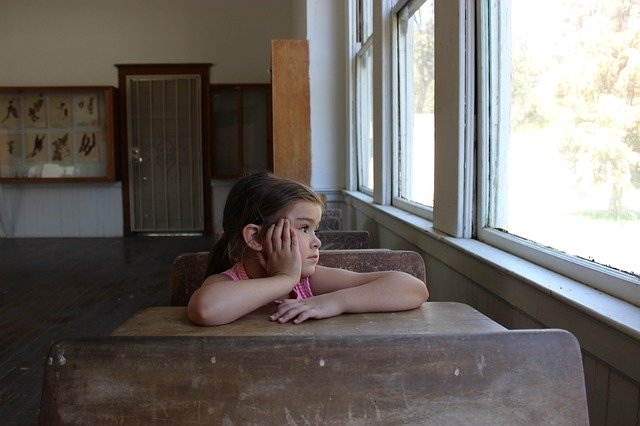

Scientists from Brazil and France argue for the need to train teachers to stimulate this ability in the classroom, which is considered to be essential in the context of the 21st century; the topic was debated at FAPESP Week France (imagem: Cole Stivers / Pixabay)
Scientists from Brazil and France argue for the need to train teachers to stimulate this ability in the classroom, which is considered to be essential in the context of the 21st century; the topic was debated at FAPESP Week France.
Scientists from Brazil and France argue for the need to train teachers to stimulate this ability in the classroom, which is considered to be essential in the context of the 21st century; the topic was debated at FAPESP Week France.

Scientists from Brazil and France argue for the need to train teachers to stimulate this ability in the classroom, which is considered to be essential in the context of the 21st century; the topic was debated at FAPESP Week France (imagem: Cole Stivers / Pixabay)
By Maria Fernanda Ziegler, from Paris | Agência FAPESP – Innovation, considered to be an important asset for the 21st century, involves creativity as an essential input. However, a study conducted using teachers from Brazilian schools found that this mental ability is not valued or stimulated in the country’s classrooms.
“The creativity tests applied to children showed that they had this potential. However, the teachers didn’t perceive their students as being creative. Moreover, this skill wasn’t seen as something that was important but rather as a problem, since creative individuals are questioners. For that reason, this capacity is being stifled in classrooms from elementary school up to university,” said Solange Muglia Wechsler, director of the Laboratory for Psychological Evaluation and Measures at the Catholic Pontifical University of Campinas (PUC-Campinas) in the state of São Paulo, Brazil, during a lecture given at FAPESP Week France.
The studies were conducted by Wechsler using teachers in Campinas, Brasília, São Luís, and Manaus. The work was supported by Brazil’s National Council for Scientific and Technological Development (CNPq).
“The world is changing and the work we do today will, in the future, be carried out by machines. That leaves us with the capacity to create and, therefore, this ability needs to be stimulated. That is a current concern of governments,” said Todd Lumbart, a professor at the Paris Descartes University, also in a lecture at FAPESP Week France.
Both Lumbart and Wechsler are interested in developing projects focused on stimulating creativity in the classroom. This ability, according to the researchers, is considered to be multidimensional, as it involves cognitive processes, personality characteristics, environmental conditions, and the interaction between the variables.
For Wechsler, identifying and developing creativity could focus on specific dimensions, depending on the purpose of the study. Hence, different strategies could be employed according to the context.
Both Wechsler and Lumbart argue for the training programs for teachers to inform them about the diversity of talents. “It is necessary to provide strategies for stimulating creativity in the different areas of the school curriculum, valuing leadership in the different domains, and incentivizing students’ motivation to learn,” said Wechsler.
Girls are more discouraged
Using psychological tests, standardized scales, questionnaires, and interviews, the research conducted by Wechsler found that children are initially creative, but that this ability starts to decline from eight years onward. The problem seems to be even greater among girls.
“The studies show an equal potential for creativity among boys and girls. However, creativity is even more repressed in women over their lifetimes, as they are pressured into following a standard determined by society,” she said.
According to Wechsler’s assessment, the “carers” stereotype befalls women due to their ability to bear children. “They’re always seen as someone who seeks to harmonize and love everyone. Child bearing is generalized to all dimensions of women’s lives. This creates a mental block, it results in the psychological effect of always seeking to be loved, bring people together, and, above all, it makes it hard for women to find their place,” she said.
The situation is worsened, according to the researcher’s assessment, by girls’ self-perception regarding their potential. “Data from the research show that, although girls have an equal potential to that of boys, their self-assessment is more deprecating. They don’t think they have intellectual or creative potential. This self-perception doesn’t fit with the result of the psychological test we applied and that’s very worrying,” said Wechsler.
The FAPESP Week France symposium was held between November 21st and 27th, thanks to a partnership between FAPESP and the universities of Lyon and Paris, both in France. Read other news about the event at http://www.fapesp.br/week2019/france/.
Republish
The Agency FAPESP licenses news via Creative Commons (CC-BY-NC-ND) so that they can be republished free of charge and in a simple way by other digital or printed vehicles. Agência FAPESP must be credited as the source of the content being republished and the name of the reporter (if any) must be attributed. Using the HMTL button below allows compliance with these rules, detailed in Digital Republishing Policy FAPESP.





